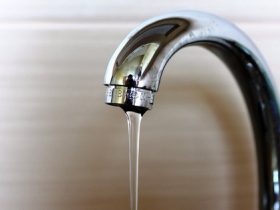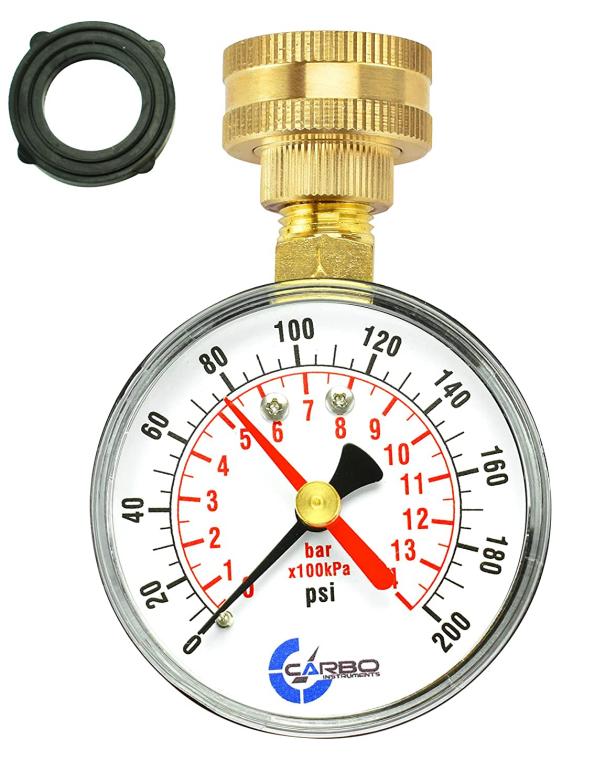Quick Fixes for Resolving Low Water Pressure in Your Home
Quick Fixes for Resolving Low Water Pressure in Your Home
Blog Article
The content which follows involving 9 Reasons for Low Water Pressure in Your House is without a doubt compelling. Don't skip it.

Low tide stress in your home can be a discouraging issue, affecting whatever from showering to washing recipes. If you're experiencing weak water flow, there are numerous possible causes and options to discover. In this guide, we'll discuss typical reasons for low tide stress and practical steps to resolve the problem efficiently.
Introduction to Low Tide Pressure
Low water stress occurs when the flow of water from your taps, showers, and various other components is weaker than typical. This can make everyday tasks a lot more challenging and much less efficient. Understanding the sources of low water pressure is important to finding the right option.
Usual Root Causes Of Low Tide Pressure
Pipe Obstructions
Gradually, pipes can become clogged with natural resource, sediment, or particles, limiting the flow of water. This is an usual problem in older homes with galvanized steel pipes.
Corrosion
Corrosion within pipes can lead to leakages and lowered water pressure. Rust build-up can restrict water flow, particularly in maturing plumbing systems.
Faulty Stress Regulators
Stress regulators are responsible for maintaining consistent water stress in your home. If they malfunction, it can cause low water stress or uneven flow throughout the house.
Community Water Issues
Sometimes, the trouble exists outside your home. Metropolitan water system concerns, such as main line leakages or maintenance job, can temporarily decrease water pressure in your area.
How to Identify Low Water Stress
Inspecting Faucets and Fixtures
Begin by evaluating the water pressure at different faucets and fixtures throughout your home. If the concern is isolated to particular areas, it might show localized issues.
Checking Pipelines
Examine visible pipes for indicators of leaks, rust, or blockages. Focus on any kind of uncommon audios, such as knocking or rattling pipelines, which can show concerns within the plumbing system.
Consulting with a Plumber
If you're unable to pinpoint the reason for low water pressure, consider hiring an expert plumber to conduct a complete assessment. They can identify underlying issues and suggest proper solutions.
DIY Solutions to Fix Low Tide Pressure
Cleaning Up Aerators and Showerheads
Natural resources can gather in aerators and showerheads, reducing water flow. Eliminate and cleanse these components routinely to boost water stress.
Flushing Hot Water Heater
Debris buildup in the water heater can limit circulation and reduce effectiveness. Flushing the storage tank regularly aids get rid of sediment and preserve ideal performance.
Checking Stress Regulatory Authority
Make certain that the stress regulator is working properly. Adjusting or changing the regulator can aid bring back proper water pressure throughout your home.
Clearing Clogs in Pipeline
For minor obstructions, attempt utilizing a plumbing snake or chemical drainpipe cleaner to clear obstructions in pipelines. Be cautious when using chemicals and follow safety and security guidelines.
When to Call a Professional Plumber
If do it yourself efforts stop working to settle the concern or if you presume considerable plumbing problems, it's best to seek aid from a qualified plumber. They have the expertise and tools to resolve complex issues safely and effectively.
Safety Nets to Maintain Water Stress
Regular Upkeep
Arrange routine maintenance for your plumbing system to avoid issues such as corrosion, leaks, and blockages. Dealing with small troubles early can help stay clear of even more considerable repair services later on.
Setting Up a Pressure Booster
Think about mounting a stress booster pump to boost water stress in areas with constantly reduced circulation. This can be specifically advantageous for multi-story homes or buildings with high-demand fixtures.
Monitoring Water Usage
Be mindful of water use habits and prevent ill-using the plumbing system. Straightforward changes, such as shocking showers and washing lots, can assist maintain appropriate water pressure.
Final thought
Handling low water stress can be discouraging, yet determining the underlying causes and executing proper solutions can recover optimal flow throughout your home. Whether it's cleaning aerators, checking pipelines, or speaking with a plumber, taking aggressive actions can ensure a constant supply of water for your day-to-day demands.
How to Fix Low Water Pressure In Your Home
Municipal Water Supply Issues
Scheduled maintenance, high demand, and water main breaks are all potential causes for low water pressure within a city or county’s water lines. While there’s not much you can do to personally fix a problem with your city or county’s water supply system, you can play a big role in documenting the issue and alerting those who can.
How to fix it:
Ask your neighbors if they are experiencing any issues with low water pressure. If multiple homes are affected, it’s likely related to the city’s water line.
Contact the local Water Authority to see if there is any maintenance taking place that might be affecting your supply. Also let them know of your specific issues. If other homeowners report the same issues, they’ll know that there could be a larger issue to look into.
Faulty Fixtures
A damaged or clogged shower head, faucet or appliance is the first thing we’d suggest checking, especially if low water pressure appears to be isolated to a specific area of your home.
How to fix it:
First, turn off the main water supply to your home.
Check the affected appliances for build-up or debris. In the case of a faucet, you can simply unscrew the aerator at the tip of the faucet. Showerheads should be fully detached from the water pipe.
While the appliances are detached, you may want to check the water supply to determine if the fixtures were in fact the issue.
To clean, soak the showerhead or aerator in vinegar and brush off any visible debris.
Reattach the fixtures and check the water pressure again. If it is still low, there is likely a deeper issue at hand, which can be determined by a professional plumber.
Pipe Obstructions
Mineral deposits, rust or other debris within water pipes can lead to blockages or corrosion over time.
How to fix it:
When you think of a clog, you probably think of a drain clog. While there are many DIY solutions to clearing a drain, clogs in a water pipe will almost always require the help of a professional plumber. A plumber will be able to locate the affected pipe and clean out any debris or mineral deposit buildup. In severe cases, the pipe may need to be replaced. Your plumber might also recommend a water softening system to remove the minerals from your home’s water supply that can contribute to pipe blockages over time.
Plumbing Leak
Undetected water line leaks can divert water away from your residential pipes, reducing the water pressure in your fixtures.
How to fix it:
Check your water meter by turning off all water sources and monitoring the meter for any movement, which could be a clear indicator of a potential leak.
Check all visible pipes for signs of leaking, including water stains, active dripping or damp spots around the pipe.
Inspect fixtures, including faucets and showerheads, for any drips.
Test the pressure but recording the pressure with the main water valve shut off. Leave off for a few hours and test again. A significant drop in pressure is a clear sign of a leak.
https://kiddcoplumbing.com/plumbing-blog/how-to-fix-low-water-pressure/

How to Fix Low Water Pressure In Your Home
Municipal Water Supply Issues
Scheduled maintenance, high demand, and water main breaks are all potential causes for low water pressure within a city or county’s water lines. While there’s not much you can do to personally fix a problem with your city or county’s water supply system, you can play a big role in documenting the issue and alerting those who can.
How to fix it:
Faulty Fixtures
A damaged or clogged shower head, faucet or appliance is the first thing we’d suggest checking, especially if low water pressure appears to be isolated to a specific area of your home.
How to fix it:
Pipe Obstructions
Mineral deposits, rust or other debris within water pipes can lead to blockages or corrosion over time.
How to fix it:
When you think of a clog, you probably think of a drain clog. While there are many DIY solutions to clearing a drain, clogs in a water pipe will almost always require the help of a professional plumber. A plumber will be able to locate the affected pipe and clean out any debris or mineral deposit buildup. In severe cases, the pipe may need to be replaced. Your plumber might also recommend a water softening system to remove the minerals from your home’s water supply that can contribute to pipe blockages over time.
Plumbing Leak
Undetected water line leaks can divert water away from your residential pipes, reducing the water pressure in your fixtures.
How to fix it:
https://kiddcoplumbing.com/plumbing-blog/how-to-fix-low-water-pressure/
As an avid reader on 9 Reasons for Low Water Pressure in Your House, I was thinking sharing that section was really helpful. Don't hesitate to take the time to distribute this blog entry if you enjoyed reading it. Thanks a bunch for being here. Come back soon.
Call Today Report this page